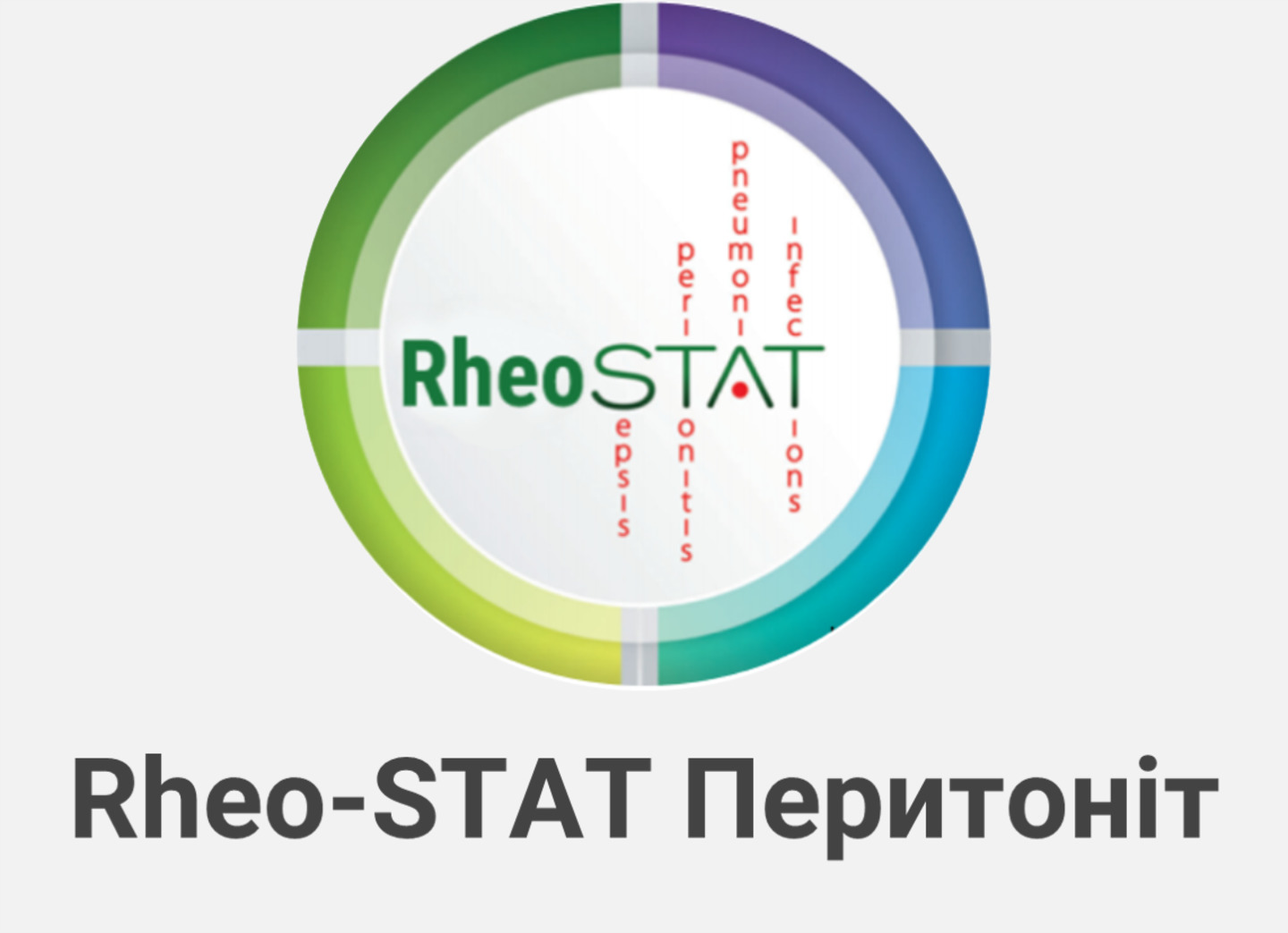New hemostatic bandage based on a natural biopolymer chitosan
Medical Academy of Postgraduate Education, Kharkiv, Ukraine.
Abstract. Bleeding is deadly dangerous. Emergency, effective hemostasis is the main task in providing assistance both in civil conditions and at battlefields. Therefore, prehospital hemostatic care should be provided as soon as possible. A good hemostatic agent should be available in extreme circumstances, easy to apply, and have the ability to control bleeding from great vessels. Such a solution can be a national hemostatic bandage Revul® on a nonwoven basis with chitosan that meetsall the requirements for these materials. Haemostatics basedon chitosan when stopping massive bleeding relates to first aid by North Atlantic Treaty Organization (NATO) classification. Therefore, a hemostatic chemical-based bandage (chitosan, etc.), according to the Tactical Combat Casualty Care guidelines, 2009 (TCCC), the intensive care manual for pre-hospital trauma in the combat area (BATLS – Battlefild Advanced Trauma Life Support), is included in the modern NATO standard kit as an indispensable component.
Keywords: bleeding; chitosan.
Bleeding is deadly dangerous; it is a fundamental truth of emergency medicine. Uncontrolled bleeding at the battlefield was recognized as a significant threat to the lives of soldiers for the whole history of wars [1]. Great vessel injuries with massive bleeding make on average up to 50 % of total lethality in combat conditions and 31 % in peacetime [2, 3].
It is well known that the heavy blood loss decreases the total blood volume (TBV), results in reduced cardiac output, raised total peripheral vascular resistance, progressive impaired microcirculation with the development of the brain and other life-supporting organ hypoxia. And if the situation continues to develop, without effective intervention, it will grow to uncontrolled hemorrhagic shock [3, 4]. In addition, bleeding leads to a progression of hypothermia, metabolic acidosis with impaired blood clotting system, which in turn makes hemostasis more difficult [5].
Disseminated intravascular coagulation (DIC) and multiple organ dysfunction syndrome are severe complications of the haemorrhagic shock. The more energy-oxygen deficiency of the organism is expressed, the higher is its functionality loss, the heavier is the course of the hemorrhagic shock and the higher is the risk of mortality (A.G. Shifrin, G.A. Shifrin, 2010, 2012; L.M. Smirnova, 2011).
The need to refill the blood components increases the risk of development of the massive blood transfusion syndrome, multiple organ dysfunction syndrome and makes subsequent treatment difficult [6]. The posttraumatic microvascular bleeding associated with coagulopathy, secondary to metabolic disorders, hypothermia and exhaustion or cell and protein dysfunction, requires another approach. While the transfusion of blood products may be necessary to compensate for the blood loss, this doesn’t always solve the problem of microvascular bleeding. There is no doubt that bleeding is the main reason for morbidity and mortality during injury. Optimization of treatment of both isolated and combined injuries with external bleeding requires a well-coordinated multidisciplinary approach. The sooner primary measures are taken, the faster the target treatment can be started and the best results achieved [6]. According to the concept of “damage control”, control of haemorrhage at the pre-hospitalization phase may decrease morbidity, which is also supported by published data of the military resources of the United States [1, 3, 4]. Essays of the Vietnam War, as well as Iraq and Afghanistan campaign, reported that about 9 % of deaths due to injured limbs bleeding could have been prevented by effective method of hemostasis [1]. Especially at the front, under the conditions of concurrent complex terrain, quickly developing events, remoteness from the hospital base and difficulties of the timely evacuation, it is not always possible to help soldiers suffering from heavy bleeding. Therefore, effective pre-hospital hemostatic aid should be provided as soon as possible, at the battlefield [7].
In a daily peacetime situation, the most severely wounded victims can be delivered and transported by ambulance brigades within a few minutes.
In battle, it often takes several hours to take the wounded soldiers from the line of contact. In these conditions, even if the distances are small, it is not always possible to get to the wounded quickly. In addition, whereas victims of civil injuries may have a time limit within the “golden hour”, persons with penetrating injuries at the battlefield often have only “platinum 5 minutes”. Therefore, an effective pre-hospital hemostatic aid should be provided as soon as possible, at the battlefield [8].
In the current situation, as the risk of man-made and natural disasters is increased, the world suffers from terrorist acts and local clashes, it is necessary that the first aid kit has the most efficient hemostatic means with minimum adverse effects for quick control of bleeding.
The practice of warfare in Vietnam, Iraq and Afghanistan led to the adoption of a Combat Application Tourniquet (CAT-T®) for the control of severe bleeding from limbs and hemostatic bandages to stop severe bleeding from limbs, head, neck and trunk. In the meantime, some NATO countries provided their troops with hemostatic bandage (chemical fabric bandages for the control of bleeding) with the recommendations of inclusion in the various protocols, such as TCCC – Tactical Combat Casualty Care, issued in November 2009, and BATLS – Battlefild Advanced Trauma Life Support [7, 8].
Recently, many new types of bandages with hemostatic effect have been developed which can control severe bleeding on the sections of the body where arteries compression is impossible. Fibrin sealant dressing, QuikClot Combat Gauze (QCG) and QuickClot Combat Gauze XL (QCX) consisting of kaolin and becoming a necessary emergency aid attribute in the US Marine Corps, HemCon dressing (HC), Celox™, derived of the shellfish chitin, came into common use. At the same time, although many articles that demonstrate the best method of hemostasis in military practice and emergency medicine have been published, there is no final conclusion, and the search for new components and solutions is continued.
One of such solutions is Revul®, a domestic bandage using chitosan as a hemostatic agent. Chitosan is a natural substance, a biodegradable polysaccharidic amine received by chemical deacetylation of chitin derived from shellfish. Its hemostatic action does not depend on the coagulation cascade (it does not affect the tissue and plasma factors, the clot formation is independent of the number and quality of platelets). Along with other factors contributing to the blood reaction, chitosan contains small positively charged particles. These particles, through electro-static interactions, attract negatively charged blood cells and form a dense clot regardless of the existing conventional clotting mechanism. The average time for a dense clot formation varies between 25 and 30 seconds. In addition, chitosan adsorbs water, one of the main blood components, thus concentrating the natural blood clotting factors and inducing the natural clotting mechanism. Moreover, it is not miscible with blood and does not enter the vessels. Chitosan function is not influenced by such external factors as body temperature (hypothermia or hyperthermia), and its efficiency is not reduced by the use of heparin and aspirin in patients. In animal bleeding models, chitosan was demonstrated to continue its action even with the use of direct and indirect action anticoagulants. Chitosan is non-toxic and does not cause exothermic reaction. Unlike QuikClot Combat Gauze (QCG), the interaction of chitosan with the blood does not increase the media temperature and there is no additional thermal damage of the wound [9, 10]. After application, chitosan is easily washed from the wound with the saline solution. In addition, Revul® is made in the form of an unwoven bandage of 11.2 – 1.83 m in a sealed vacuum package, has a Z-shape setting for a more convenient and quick application for urgent control of bleeding. Z-shape setting saves time on unrolling and facilitates placing in the wound. A chitosan dressing is universal (it can be applied on different parts of the body) and easy to use, similar to a gauze bandage. In terms of usability, the hemostatic material of Revul® can be used in the field, in the emergency department, in the patient’s ward in the post-operating period with external bleedings. Chitosan-based hemostatic material has proven its worth as a means of reliable, fast, safe hemostasis in the field trials in Afghanistan, both at the battlefield and in operating room [10], and may also be used as a hemostatic drug during the surgery. There is evidence of successful use of chitosan in gynaecological and cardiosurgical practices in the massive traumatic operations with foreseen heavy blood loss [11]. In the models of liver injury in big biological objects, during the hepatic tamponade with chitosan-based dressing, the hemostatic bandage is tightly fixed to the wound surface of the liver and causes no abdominal contact damage. Its use resulted in a lesser reduction of the red blood count and did not lead to the development of coagulopathy, unlike the conventional hepatic tamponade [12].
The advantages of chitosan-based haemostatic bandages include a good adhesive ability: the dressing sticks to the wound quickly and tightly, isolating it from the secondary infection. Its own antibacterial character provides chitosan with a superior advantage over other hemostatic materials [8]. The unwoven base creates conditions under which no fibers and fabric parts are left in the wound after its removal, unlike with the use of gauze, which is also very important to prevent and reduce the risk of increased infection. Due to the effect of solubility, chitosan can be absorbed in the organism and facilitate tissue regeneration. The absence of artifacts in the form of mineral residues and fibers provides the possibility of healing the wound with primary adhesion.
Chitosan is adsorbed in the body if accidentally left in the patient’s wound. It degrades in the patient’s body to monomers (the simplest basic sugars of glucosamine and N-acetylglucosamine) and is absorbed with the help of lysozyme, a natural human enzyme which is present in tears, saliva and mucus. In the instruction to Revul® hemostatic bandage, it is said that the material can be left in the patient’s wound for 24 hours. The clot in the wound preserves its consistency, closing the vessels tightly and not degrading. If swallowed, it does not cause poisoning or overdosing effects due to the lack of toxicity. In addition, there are no data on the side effects of the substance. No cases of allergic or rejection reactions have been recorded. However, the possibility of side effects in patients with allergies to shrimps, crustaceans, shellfish is not excluded [9].
In the light of the above, the conclusions made by foreign military medical experts (Tan H., Bleecker C.P., 2011) concerning chitosan dressing are interesting:
— hemostatic dressing is easy to use, multipurpose, cost-efficient; it does not lose its properties;
— the use of hemostatic dressing has undeniable additional value for the military forces;
— hemostatic dressing should be available for each military nurse, each military medical officer and paramedic;
— we recommend that every soldier brought into action should have an individual hemostatic dressing.
Thus, Revul®, a chitosan-based unwoven domestic hemostatic bandage, is a safe and efficient device to control the external bleeding, which is vitally necessary in the context of the emergency aid, both in the extreme environment of the peacetime, at the battlefield and in an every-day medical practices.



